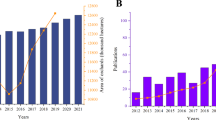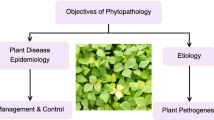Abstract
In the field of agriculture science, the presence of disease in fruits affects the quantity and quality of production. To sort the fruits based on quality is a challenging task. Human grades the fruit but this process is inconsistent, stagnant, expensive and get influenced by the surrounding. Thus an effective system for grading fruit is desired. In this paper, an automated fruit grading system has been developed for mono and bi-colored apples. An automated fruit grading system involves three steps, namely, segmentation, feature extraction, and classification. In this work, segmentation of defected area has been carried out using fuzzy c-means and for feature extraction, the various combination of Statistical/ Textural, Geometrical, Gabor Wavelet and, Discrete Cosine Transform feature have been considered. For classification three different classifiers i.e. k-NN (k- Nearest Neighbor)), SRC (Sparse Representation Classifier), SVM (Support Vector Machine) have been applied. The proposed system has been validated for four different databases of apples one having 1120 samples of which 984 were defective, the second having 333 samples of which 247 were defective, the third having 100 samples with 26 defective and the fourth with 56 defectives. The maximum accuracy of 95.21%, 93.41%, 92.64% and 87.91% for four datasets respectively, achieved by the system is encouraging and is comparable with the state of art techniques. The system performance has been validated using the k-fold cross-validation technique by considering k = 10. Results showed that a combination of features provides improved performance and the SVM classifier has the highest performance among k-NN, SRC. As compared to the state of art, our proposed solution yields better accuracy. Hence, the proposed algorithm showed great potential for the classification of apple and the possibility of its uses for further different fruit.










Similar content being viewed by others
References
Valous N, Zheng L, Sun D-W, Tan J (2016) Quality evaluation of meat cuts. In: Computer vision technology for food quality evaluation, 2nd edn. Elsevier, pp 175–193
Magwaza LS, Opara UL (2015) Analytical methods for determination of sugars and sweetness of horticultural products? A review. Sci Hortic 184:179–192
Wu D, Sun D-W (2013) Color measurements by computer vision for food quality control–a review. Trends Food Sci Technol 29:5–20
Jackman P, Sun D-W, ElMasry G (2012) Robust color calibration of an imaging system using a color space transform and advanced regression modeling. Meat Sci 91:402–407
Dissing BS, Clemmesen LH, Løje H, Ersbøll BK, Adler-Nissen J (2009) Temporal reflectance changes in vegetables. Paper presented at the IEEE 12th international conference, Vancouver, Canada.
Ariana D, Guyer DE, Shrestha B (2006) Integrating multispectral reflectance and fluorescence imaging for defect detection on apples. Comput Electron Agric 50(2):148–161
Gowen AA, O'Donnell CP, Cullen PJ, Downey G, Frias JM (2007) Hyperspectral imaging–an emerging process analytical tool for food quality and safety control. Trends Food Sci Technol 18(12):590–598
Yu H, He F, Pan Y (2019) A novel segmentation model for medical images with intensity inhomogeneity based on adaptive perturbation. Multimed Tools Appl 78(9):11779–11798
Chen X, He F, Yu H (2019) A matting method based on full feature coverage. Multimed Tools Appl 78(9):11173–11201
Zhang S, He F, Ren W, Yao J (2018) Joint learning of image detail and transmission map for single image dehazing. Vis Comput. https://doi.org/10.1007/s00371-018-1612-9
Singh S, Singh NP (2019) Machine learning based classification of good and rotten apple. Recent trends in Communication, Computing and Electronics, 377–386.
Leemans V, Magein H, Destain M-F (1998) Defect segmentation on 'golden delicious' apples by using color machine vision. Comput Electron Agric 20(2):117–130
Rennick G, Attikiouzel Y, Zaknich A (1999) Machine grading and blemish detection in apples. Int Symp Signal Processing and Appl 567(570)
Blasco J, Aleixos N, Molto E (2003) A machine vision system for automatic quality grading of fruit. Biosyst Eng 85(4):415–423
Xing J, Bravo C, Jancsok PT, Ramon H, Baerdemacker JD (2005) Detecting bruises on Golden delicious apples using hyperspectral imaging with multiple wavebands. Biosyst Eng 90(1):27–36
Suresha M, Shilp NA, Sommy B (2012). Apple grading based on SVM Classifier. International Journal of Computer Applications 0975–8878
Dubey SR, Jalal AS (2015) Apple disease classification using color, texture and shape features from images. Springer, London
Ashok V, Vinod DS (2014), Automatic Quality Evaluation of Fruits Using Probabilistic Neural Network Approach. International Conference on Contemporary Computing and Informatics (IC3I), 308–31.
Raihana A, Sudha R (2016) AFDGA: defect detection and classification of apple fruit images using the modified watershed segmentation method. Int J Sci Technol Eng 3(6):75–85
Ali MAH, Thai KW (2017) Automatic fruit grading system. International Symposium on Robotics and Manufacturing Automation
Moallem P, Serajoddin A, Pourghassem H (2017) Computer vision based apple grading for golden delicious apples based on surface features. Inform Proces Agric 4:33–40
Jawale D, Deshmukh M (2017) Real-time bruise detection in apple fruits using thermal. In: International conference on communication and signal processing, pp 1080–1085
Wen Z, Tao Y (1999) Building a rule-based machine-vision system for defect inspection on apple sorting and packing lines. Expert Syst Appl 16:307–313
Leemans V, Magein H, Destain M-F (1999) Defect segmentation on 'Jonagold' apples using color vision and a Bayesian classification method. Comput Electron Agric 23(1):43.53
Leemans V, Magein H, Destain MF (2002) On-line fruit grading according to their external quality using machine vision. Biosyst Eng 83:397–404
Kleynen O, Leemans V, Destain M, F. (2003) Selection of the most efficient wavelength bands for ‘Jonagold’ apple sorting. Postharvest Biol Technol 30(3):221.232
Leemans V, Destain M (2004) A real-time grading method of apples based on features extracted from defects. J Food Eng 61(1):83–89
Unay D, Gosselin B (2004) A quality sorting method for 'Jonagold' apples. Int Conf of Agricultural Engineering.
Kleynen O, Leemans V, Destain M, F. (2004) Development of a multi-spectral vision system for the detection of defects on apples. J Food Eng 69(1):41–49
Kavdir I, Guyer DE (2004) Comparison of artificial neural networks and statistical classifiers in apple sorting using textural features. Biosyst Eng 89:331–344
Kleynen O, Leemans V, Destain MF (2005) Development of multi-spectral vision system for the detection of defects on apples. J Food Eng 69:41–49
Unay & Gosselin (2005). Artificial neural network-based segmentation and apple grading by machine vision. International Conference on Image processing.
Xiaobo Z, Jiewen Z (2005) Apple quality assessment by fusion three sensors. Sensors IEEE:389–392
Zou XB, Zhao JW, Li Y, Mel H (2010) In-line detection of apple defects using three color cameras system. Comp Electron Agric 70(1):129–134
Unay D, Gosselin B, Keenan D, Leemans V, Destain M, Debeir O (2011) Automatic grading of bi-colored apples by multispectral machine vision. Comput Electron Agric 75:204–212
Bhargava, A., Bansal., A. (2018), “Fruits and vegetable quality evaluation using computer vision: A review” J King Saud Univ Comp Infor Sci, https://doi.org/10.1016/j.jksuci.2018.06.002
Apples Image. Retrieved January 15, 2018, from https://www.google.com/search?biw=1366&bih=657&tbm=isch&sa=1&ei=2T4wXaz0HNO5rQHbnpewBA&q=healthy+apples+images&oq=healthy+apples+images&gs_l=img.3...9438.13173..13989...0.0..0.1981240.0j8......0....1..gws-wiz-img.......0i8i7i30.1bojhB1Q xk&ved=0ahUKEwjsxIfYlr7jAhXTXCsKHVvPBUYQ4dUDCAY&uact=5
Anonymous (2004). Commission regulation (EC) no 85/2004 of 15 January 2004 on marketing standards for apples. Off. J. Eur. Union L 13, 3–18.
Ashok V, Vinod DS (2014) Using K-means cluster and fuzzy C means for defect segmentation in fruits. Int J Comp Eng Technol:11–19
Ou X, Pan W, Xiao P (2014) Vivo skin capacitive imaging analysis by using grey level co-occurrence matrix (GLCM). Int J Pharm 460(2):28–32
Raheja JL, Kumar S, Chaudhary A (2013) Fabric defect detection based on GLCM and Gabor filter: a comparison. Opt – Int J Light Electron Opt 124(23):6469–6474
Haralick RM, Shanmugam K, Dinstein I (1973) Textural features for image classification. IEEE Trans Systems, Man Cybernetics 3(6):610–621
Unser M (1995) Texture classification and segmentation using wavelet frames. Image process. IEEE Trans 4(11):1549–1560
Lou S, Jiang X, Scott PJ (2012) Algorithms for morphological profile filters and their comparison. Precis Eng 36(3):414–423
Arivazhagan S, Ganesan L, Priyal SP (2006) Texture classification using Gabor wavelets based rotation invariant features. Pattern Recogn Lett 27(16):1976–1982
Dabbaghchian S, Aghagolzadeh A, Moin MS (2007) Feature extraction using discrete cosine transform for face recognition. In: International symposium on signal processing and its applications (ISSPA).
Naik S, Patel B (2014) CIELab based color feature extraction for maturity level grading of Mango (Mangifera indica L.). Nat J Syst Inform Technol 7(1):0974–3308
Burges, C.J.C. (1998). A tutorial on support vector machines for pattern recognition.
Udemy (2017). Machine Learning A-ZTM: Hands-On Python & R In Data Science
Wright J, Yang AY, Ganesh A, Sastry SS, Yi M (2009) Robust face recognition via sparse representation, Pattern Analysis, and Machine Intelligence. IEEE Transactions on 31:210–227
Chang CC, Lin CJ (2001) Libsvm: a library for support vector machines, via http://www.csie.ntu.edu.tw/cjlin/libsvm
Quinlan JR (1993) C4.5: programs for machine learning. Morgan Kaufmann, San Francisco.
Seng WC, Mirisaee SH (2009) A new method for fruits recognition system. In: International conference on electrical engineering and informatics, pp 130–134
Khan MA, MIU L, Sharif M, Javed K, Aurangzeb K, Haider SI, Altamrah AS, Akram AT (2019) An optimized method for segmentation and classification of apple diseases based on strong correlation and genetic algorithm based feature selection. IEEE Access 7:46261–46277
Pan Y, He F, Yu H (2019) A novel enhanced collaborative autoencoder with knowledge distillation for top-N recommender systems. Neuro computing 332:137–148
Li K, He F, Yu H, Chen X (2018) A parallel and robust object tracking approach synthesizing adaptive Bayesian learning and improved incremental subspace learning. Front Comp Sci 13:1116–1135. https://doi.org/10.1007/s11704-018-6442-4
Kang L, Fazhi H, Haiping Y, Xiao C (2017) A correlative classifiers approach based on particle filter and sample set for tracking occluded target. Appl Math A J Chinese Univ 32(3):294–312
Wu Y, He F, Zhang D, Li X (2018) Service-oriented feature-based data exchange for cloud-based design and manufacturing. IEEE Trans Serv Comput 11(2):341–353
Lv X, He F, Yan X, Wu Y, Cheng Y (2019) Integrating selective undo of feature-based modeling operations for real-time collaborative CAD systems Journal: Future Generation Computer Systems. https://doi.org/10.1016/j.future.2019.05.021.
Author information
Authors and Affiliations
Corresponding author
Ethics declarations
Conflict of interest
The authors declare that they have no conflict of interest.
Ethical approval
This article does not contain any studies with human participants performed by any of the authors.
Informed consent
Not applicable.
Additional information
Publisher’s note
Springer Nature remains neutral with regard to jurisdictional claims in published maps and institutional affiliations.
Rights and permissions
About this article
Cite this article
Bhargava, A., Bansal, A. Quality evaluation of Mono & bi-Colored Apples with computer vision and multispectral imaging. Multimed Tools Appl 79, 7857–7874 (2020). https://doi.org/10.1007/s11042-019-08564-3
Received:
Revised:
Accepted:
Published:
Issue Date:
DOI: https://doi.org/10.1007/s11042-019-08564-3




